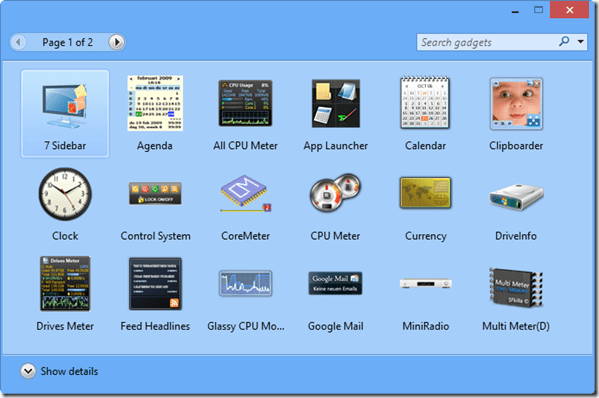Exploring the Legacy of Windows 7 Desktop Gadgets: A Comprehensive Examination

Introduction:
Windows 7, released by Microsoft in 2009, introduced several innovative features that revolutionized the computing experience for users worldwide. Among these features were desktop gadgets, small utility applications that provided quick access to information and tools directly on the desktop. While desktop gadgets have been deprecated by Microsoft in later versions of Windows, their legacy lives on as a beloved aspect of the Windows 7 operating system. In this extensive article, we will delve into the history, functionality, and impact of Windows 7 desktop gadgets, exploring their popularity among users and the reasons behind their eventual discontinuation.
The Evolution of Windows 7 Desktop Gadgets:
Desktop gadgets first made their debut in the Windows Vista operating system, offering users a convenient way to access weather forecasts, news updates, and system monitoring tools directly from the desktop. However, it was in Windows 7 that desktop gadgets truly came into their own, with an expanded selection of gadgets and improved functionality.
Windows 7 desktop gadgets encompassed a wide range of utilities, including clocks, calendars, weather widgets, CPU and RAM monitors, news tickers, and even games. Users could customize their desktops by adding, arranging, and resizing gadgets to suit their preferences and workflow. The gadgets provided at-a-glance information and quick access to frequently used tools, enhancing productivity and convenience for users.
Popular Windows 7 Desktop Gadgets:
- Clock and Calendar: The clock and calendar gadgets were among the most popular and frequently used desktop gadgets in Windows 7. They provided users with real-time information about the current time, date, and day of the week, allowing for easy scheduling and time management.
- Weather Widget: The weather widget was another highly sought-after desktop gadget, providing users with up-to-date weather forecasts for their location. Users could customize the widget to display temperature, humidity, wind speed, and other weather-related information, helping them plan their day accordingly.
- CPU and RAM Monitor: For tech-savvy users, CPU and RAM monitoring gadgets were indispensable tools for keeping track of system performance and resource usage. These gadgets displayed real-time graphs and statistics, allowing users to identify potential bottlenecks and optimize system performance.
- News Ticker: The news ticker gadget provided users with the latest headlines and news updates from their favorite sources. Users could customize the ticker to display headlines from various categories, including world news, sports, entertainment, and finance, keeping them informed and up-to-date throughout the day.
Reasons for Discontinuation:
Despite their popularity among users, Windows 7 desktop gadgets were eventually discontinued by Microsoft for several reasons. One of the primary concerns was security vulnerability, as desktop gadgets were found to be susceptible to exploitation by malicious actors to install malware or steal sensitive information. Additionally, the development and maintenance of desktop gadgets required resources that Microsoft deemed better allocated elsewhere, leading to their removal in subsequent versions of Windows.
Furthermore, the rise of alternative technologies and platforms, such as mobile devices and web-based applications, diminished the relevance of desktop gadgets in the modern computing landscape. Users increasingly turned to smartphones, tablets, and web browsers for quick access to information and utilities, rendering desktop gadgets less essential.
Conclusion:
Windows 7 desktop gadgets left an indelible mark on the computing world, offering users a convenient and customizable way to enhance their desktop experience. From clocks and calendars to weather widgets and news tickers, desktop gadgets provided users with at-a-glance information and quick access to tools that improved productivity and convenience.
While their discontinuation may have been inevitable due to security concerns and changing technology trends, the legacy of Windows 7 desktop gadgets lives on in the fond memories of users who appreciated their simplicity and utility. As technology continues to evolve, desktop gadgets serve as a nostalgic reminder of a bygone era in computing—one characterized by innovation, experimentation, and the endless possibilities of the desktop environment.







